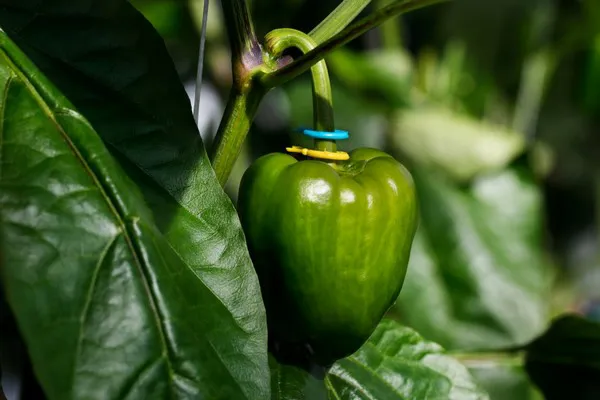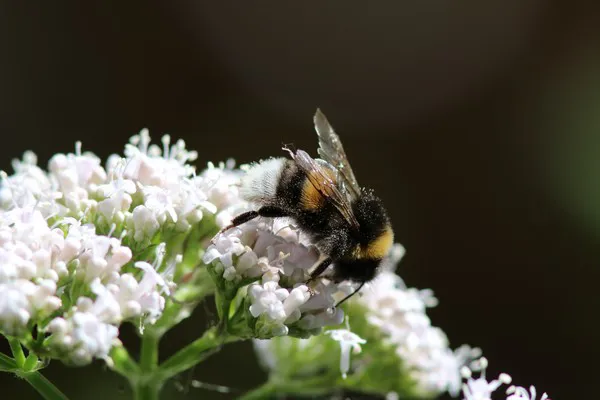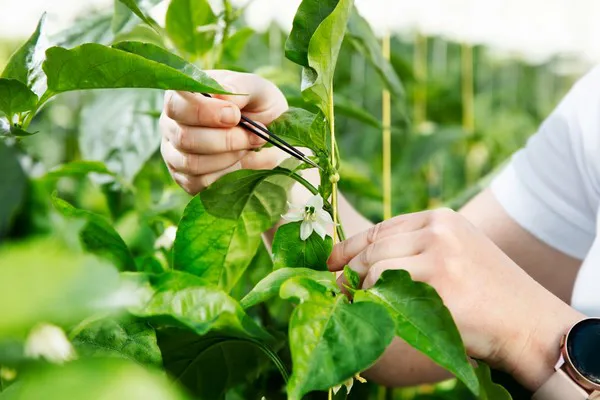As more and more growers turn to environmentally friendly methods, bee pollination has become a popular choice. However, at seed breeding companies such as Westland Seeds, bumblebees are not very welcome in the greenhouse.
"In pepper seed production, we divide plants into male and female in order to cross them with each other," the grower explains. The meaning of male plants is to produce pollen, while the flowers on female plants are meant to be fertilized. To make this happen, the pollen must reach the pistil of the female flower and fertilize the ovules, leading to fruit (and later on the seeds) development.
 Credits: Hans op den Dries
Credits: Hans op den Dries
Careful parental lines selection leads to successful hybrid seed production
To create hybrid pepper seeds, there need to be cross two different parental lines. "To reach the goal – and that is a hybrid which carries all desired characteristics – the parents have to be selected carefully. We choose the parental lines based on such traits as color, shape, size, taste, texture, and – last but not least – yield and resistance," the grower points out.
Hand pollination in pepper seed production
Once the parental lines are selected, the female flower buds need to be emasculated to ensure that they do not self-pollinate. Emasculation means removal of the male parts of the flower, which produce pollen - stamen.

"Next, we collect the pollen from the flowers on the male plants," they continue. "The pollen needs to be carefully transferred to the pistil of the emasculated female flower bud. This process is known as hand pollination. After pollination, we allow the fruit to develop on the plant. The fruit will grow and eventually ripen, and the seeds inside the fruit will ripen too."
Pollinations as a fully controlled process in seed production
Hand pollination allows this grower to have full control over the process. "By transferring pollen manually, we can ensure not only that the right parental lines are crossed and desired traits are passed down to the next generation. We also can control the quality and amount of pollen used in the process, which increases the chance of successful pollination," they say.
Biological methods in plant protection
Pollination is an essential process in pepper seed breeding. Although bees are a popular choice for pollination, Westland Seeds uses a manual method to ensure control over the process. This is how they develop unique pepper varieties that would not be possible through natural pollination.

"Though bumblebees are unwelcome at our production location, we do appreciate specific kind of insects here: environmentally friendly pesticides that protect our pepper plants. Specially formulated pesticides target pests while leaving beneficial insects unharmed. This way, we can still contribute to biodiversity and sustainability."
For more information:
Westland Seeds
Zijlweg 7a
2678 LC de Lier
Tel.: +31 174 527 750
Email: info@westlandseeds.nl
www.westlandseeds.nl
